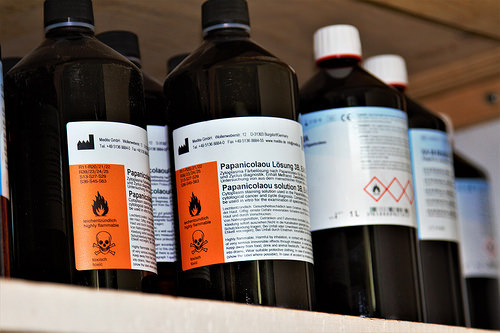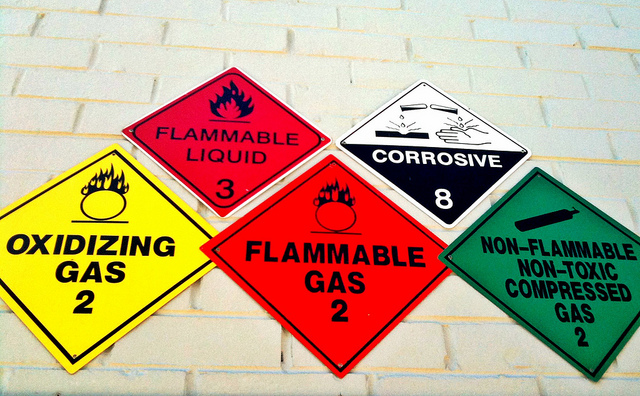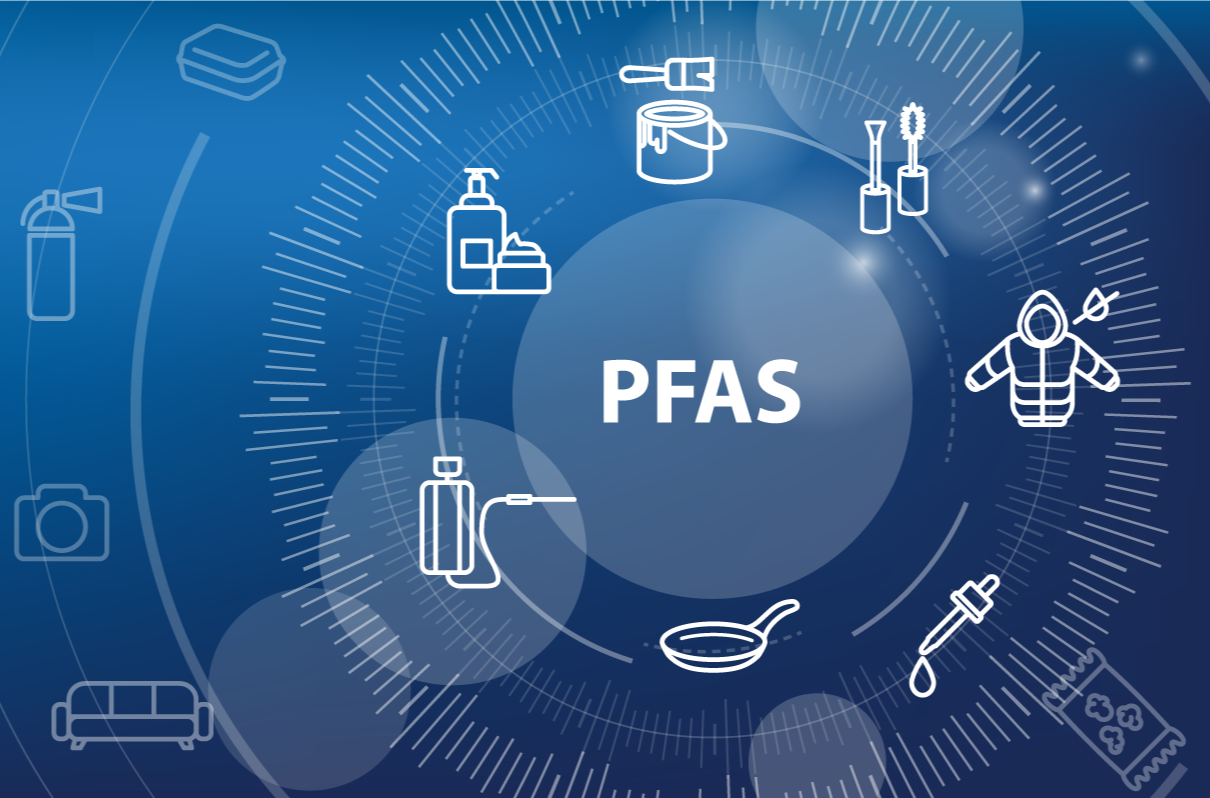The Toxic Substances Control Act (TSCA) includes procedures for the Environmental Protection Agency (EPA) to evaluate risks presented by existing chemicals using the latest scientific information – incorporating information developed after a chemical entered use in the US. Based on these reviews, EPA updates its regulatory requirements, ranging from labeling-only through use restrictions up to and including bans from further distribution and use. (I summarized these review requirements HERE). On December 18, 2024, EPA published restrictions in the Federal Register, for carbon tetrachloride (CTC) and perchloroethylene (PCE), based on its hazard reviews for those chemicals. The rest of this note discusses these new restrictions.
Audit, Compliance and Risk Blog
EPA further limits uses of carbon tetrachloride and perchloroethylene
Posted by Jon Elliott on Fri, Jan 10, 2025
Tags: Environmental risks, Environmental, EPA, tsca, Environmental Projects, chemical safety, Environment, Environmental Policy, Chemical Safety Board, Hazardous Chemicals, Environmental Compliance, EPA Regulations, EPA Standards
EPA adopts management requirements for equipment containing HFCs
Posted by Jon Elliott on Thu, Jan 02, 2025
Effective December 10, 2024, the US Environmental Protection Agency (EPA) adopted rules for the management of hydrofluorocarbons (HFCs) potentially released from equipment during maintenance or other services,
.. These rules support US efforts to implement the 2016 Kigali Amendment to the United Nations-sponsored Montreal Protocol on Substances that Deplete the Ozone Layer (which I wrote about HERE), and codified in the December 2020 coronavirus relief bill (American Innovation and Manufacturing Act of 2020 (AIM Act; which included dozens of unrelated provisions within its 5,593 pages). EPA adopted over-arching HFC phase-down rules in September 2021 (I wrote about them HERE), and continues to adjust and refine their requirements. These latest rules appear in a 191 page document in the Federal Register, finalizing (with revisions) most provisions in a proposal issued in October 2023 (which I wrote about HERE).The remainder of this note summarizes EPA’s new rules, which impose requirements using authority under the Clean Air Act (CAA) and the Resource Conservation and Recovery Act (RCRA).
Read MoreTags: Environmental risks, Environmental, EPA, Environmental Projects, Environment, Environmental Policy, Environmental Compliance
Radon gas is released naturally by radioactive decay within rock formations, from where it can percolate to the surface and infiltrate basement and trenching, and then produce hazardous concentrations if trapped or spread throughout the structure by the ventilation system. Because of its radioactive origin, radon can pose health risks – it’s the leading cause of lung cancer in non-smokers. The US Environmental Protection Agency (EPA) administers extensive information programs, which encourage in-building testing (especially in housing), and provides guidance for hazard reduction. EPA’s authority derives primarily from the Indoor Radon Abatement Act of 1988 (codified as Title III of the Toxic Substances Control Act (TSCA)). In addition, the Occupational Safety and Health Administration (OSHA) considers radon a type of ionizing radiation subject to worker protection requirements. The remainder of this note provides background to radon hazards and their management, referencing information from EPA, OSHA and other agencies and professional organizations.
Read MoreTags: OSHA, Environmental risks, Environmental, EPA, workplace safety, Environment, Environmental Policy, Hazardous Chemicals
EPA guidance on indoor ventilation protections against viruses
Posted by Jon Elliott on Wed, Nov 20, 2024
The US Environmental Protection Agency’s (EPA’s) Indoor Air Quality (IAQ) program offers guidance how to use ventilation to help prevent the spread of respiratory viruses in “indoor public spaces” including offices and commercial locations. As north America approaches winter months when more people spend more time indoors, it’s a good time to review these suggestions. The rest of this note summarizes EPA guidance.
Read MoreTags: EPA, clean air, workplace safety, Indoor Air Quality, Health and Safety Compliance, IAQ, Ventilation Strategies, Respiratory Virus Prevention
EPA issues Herbicide Strategy to protect endangered species from pesticides
Posted by Jon Elliott on Fri, Nov 01, 2024
In recent years, the US Environmental Protection Agency (EPA) has reviewed its overlapping responsibilities to regulate pesticides under the Federal Insecticide, Fungicide and Rodenticide Act (FIFRA), and to protect endangered and threatened species under the Endangered Species Act (ESA). In August, EPA completed its latest step in these efforts by issuing its “Herbicide Strategy to Reduce Exposure of Federally Listed Endangered and Threatened Species and Designated Critical Habitats from the Use of Conventional Agricultural Herbicides” (Herbicide Strategy). The rest of this note summarizes the Herbicide Strategy, and provides context regarding EPA’s FIFRA and ESA authorities.
Read MoreTags: Environmental risks, Environmental, EPA, Environmental Projects, Environment, Environmental Policy, environmental protection
In July, the US Environmental Protection Agency (EPA) issued the fifth edition of its periodic Climate Change Indicators report, focusing on Indicators related to the human health and societal impacts of climate change. While this 96-page report provides broad policy discussions, it applies data which calibrate ongoing changes that organizations can use to support evaluations of the possible impacts of these changes on their ongoing activities and future prospects. The remainder of this note summarizes EPA’s latest indicators, and how they can be relevant to organizational planning and decision-making.
Read MoreTags: Environmental, EPA, climate change, Environment, Environmental Policy, Climate, environmental protection
EPA proposes TSCA review of five potential high hazardous substances
Posted by Jon Elliott on Fri, Aug 16, 2024
The 2016 amendments to the Toxic Substances Control Act (TSCA) added procedures for the Environmental Protection Agency (EPA) to evaluate risks presented by existing chemicals using the latest scientific information – including information developed after a chemical entered use in the US. Based on these reviews, EPA is to update its regulatory requirements, ranging from labeling-only through use restrictions up to and including bans from further distribution and use. (I summarized these review requirements HERE ). Beginning in November 2019, EPA regularly announces new chemical reviews, and subsequently the results of these reviews. (I wrote about the first review announcement HERE ). On July 25, 2024 EPA published a formal proposal to review 5 additional chemicals for designation as High-Priority Substance subject to strict controls under TSCA. The rest of this note identifies these proposed chemicals.
Read MoreTags: Health & Safety, Environmental risks, Environmental, EPA, tsca, Hazardous Waste, Environment, Hazardous Chemicals, Hazardous Material
Federal Court confirms Superfund liability for arrangers that didn’t know their materials were hazardous
Posted by Jon Elliott on Fri, Jul 19, 2024
The federal Superfund law (Comprehensive Environmental Response, Compensation, and Liability Act (CERCLA) of 1980) defines broad categories of parties who might be deemed responsible for chemical contamination (“responsible parties”) and liable to pay for some or all the costs o cleaning up. Nearly 45 years after CERCLA was first enacted, a federal Court of Appeals has confirmed for the first time that a party that “arranges for” disposal can be liable for cleanup costs
, even if there’s no evidence that the party knew that the materials being disposed were hazardous. Although this ruling is consistent with the statutory text and decades of practice, it’s still the first formal ruling by an Appeals court (68th Street Site Work Group v. Alban Tractor Co.). The rest of this note summarizes “arranger-for” liability, and this case.
Read MoreTags: Health & Safety, EPA, Safety and Health at Work, CERCLA, Hazardous Chemicals, Hazardous Material
EPA designates two perfluoro “forever chemicals” as Superfund hazardous substances
Posted by Jon Elliott on Mon, Jul 01, 2024
On May 8, 2024, the Environmental Protection Agency (EPA) published rule revisions adding two perfluoro chemicals -- Perfluorooctanoic Acid (PFOA) and Perfluorooctanesulfonic Acid (PFOS) – as hazardous substances under the federal Superfund law (Comprehensive Environmental Response, Compensation, and Liability Act (CERCLA)). This listing is the latest regulatory action by EPA tightening controls on per- and poly-fluoroalkyl substances (PFAs); the initiatives are covered under the agency’s “PFAs Strategic Roadmap: EPA’s Commitments to Action 2021—2024,” promulgated in October 2021. The remainder of this note describes the latest action, which finalizes a proposal issued in August 2021 (which I wrote about HERE).
Read MoreTags: Environmental risks, Environmental, EPA, chemical safety, CERCLA, Environment, PFAS, PFOS
EPA announces final phase-outs of commerce in remaining asbestos-containing products
Posted by Jon Elliott on Mon, May 20, 2024
On March 28, 2024, the Environmental Protection Agency (EPA) published phase-out schedules leading to a ban on the remaining permissible uses of chrysotile no later than December 31, 2037. EPA applies expanded authority provided as part of amendments adopted to the Toxic Substances Control Act (TSCA) in 2016; EPA first attempted to ban asbestos products in 1989 but was partially blocked by litigation. These rules finalize a proposal from April 2022 (which I wrote about HERE). The remainder of this note discusses the rule, and the history of this round of rulemakings since 2016.
Tags: Environmental, EPA, tsca, Toxic, Toxics Release, asbestos










